Explore
Haridwar
Haridwar, one of India’s oldest pilgrimage sites, is revered as the “Gateway to the Lord” and is a key location where the Kumbh Mela is celebrated every 12 years. The sacred Har Ki Pauri ghat, believed to be where the nectar of immortality fell, is a major site for ritualistic bathing in the Ganges. Pilgrims and tourists from around the world visit to cleanse their sins and seek spiritual liberation.
What to know
Haridwar, one of the most ancient pilgrimage centers in India, has been revered for centuries. The name “Haridwar” translates to “Gateway to the Lord,” with “Hari” meaning Lord or God and “Dwar” meaning Gateway. According to Indian mythology, Haridwar is one of the four sacred locations where drops of the elixir of immortality, Amrita, accidentally fell from a pitcher carried by the celestial bird Garuda, the vehicle of Lord Vishnu. These four locations—Nasik, Ujjain, Haridwar, and Allahabad—have become key sites for the Kumbh Mela, a major religious festival celebrated every 12 years. During this grand event, millions of devotees and tourists from around the globe gather to perform ritualistic bathing in the Ganges River, believing it purifies their souls and grants spiritual liberation.
Har Ki Pauri, a prominent ghat in Haridwar, is traditionally considered the point where the Ganges exits the mountains and enters the plains. Within this sacred area, Brahm Kund is the most venerated spot, where the evening Ganga Aarti takes place. This location is believed to be where the nectar (Amrita) fell, and it is known as Brahma Kund. The ghat, situated on the west bank of the Ganges Canal—where the river is diverted slightly north—is a focal point for pilgrims seeking to cleanse their sins and achieve Moksha through holy dips. Thousands of devotees and pilgrims visit this site annually to partake in the spiritual rituals and seek divine blessings.
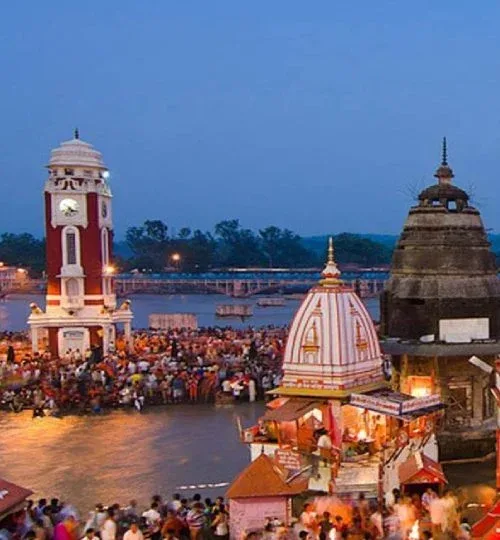
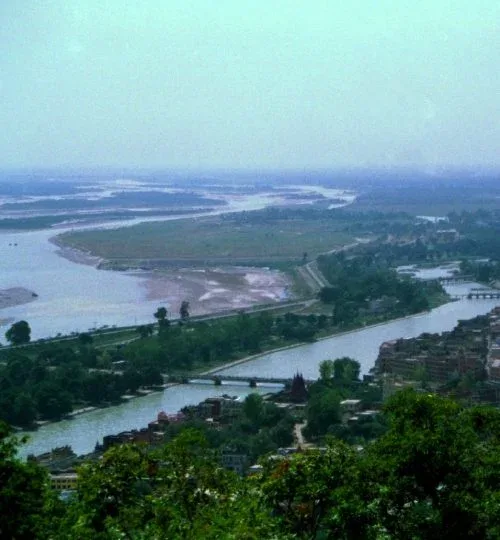


What to Expect on your Haridwar Sightseeing Tour
The evening ritual at Haridwar is particularly enchanting, featuring the river adorned with rhythmic chants and towering lamps that illuminate the darkening waters. The spectacle is further enhanced by thousands of small diyas (earthen lamps) floating gracefully on the river. As part of the One Day Haridwar Local Sightseeing Tour package, our itinerary includes visits to Har Ki Pauri, Chandi Devi Temple, Mansa Devi Temple, Shantikunj Gayatri Parivar, and Daksh Mahadev Temple.
Highlights of Haridwar Sightseeing Tour by Cab
- Tour Type: Full-day Haridwar Local Sightseeing Tour
- Duration: 9 to 10 hours
- Mode of Transport: Private Cab (not shared with others)
- Pickup & Drop: From Haridwar Hotel / Home
- Places Covered: Har Ki Pauri, Daksh Mahadev Temple, Shantikunj Gayatri Parivar, Chandi Devi Temple, Mansa Devi Temple
Whats Included
- Pick and drop from Hotel / Home in Haridwar
- Cab for Haridwar sightseeing as per the itinerary
- Vehicle parking charges
- Toll-gate charges if any
- Driver bata
What’s not included
- Entry ticket fees at tourist places in Haridwar
- Breakfast, lunch, or any other meal
- Lodging / accommodation in Haridwar
- Vehicle usage beyond the mentioned time duration
- Vehicle usage outside the designated tour route
Itinerary
- Har Ki Pauri: 90 minutes
- Chandi Devi Temple: 150 minutes
- Mansa Devi Temple: 150 minutes
- Shantikunj Gayatri Parivar: 120 minutes
- Daksh Mahadev Temple: 8 minutes
Har ki Pauri

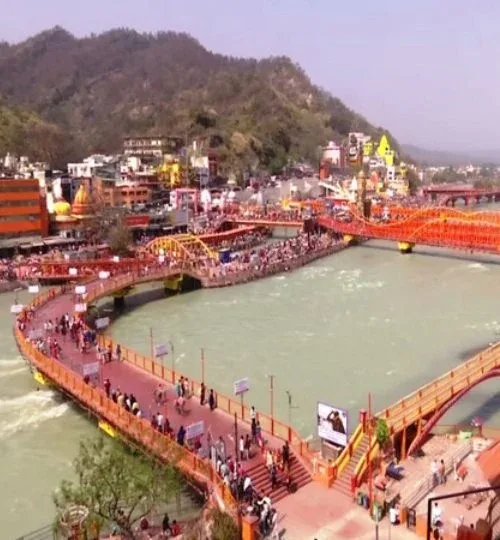
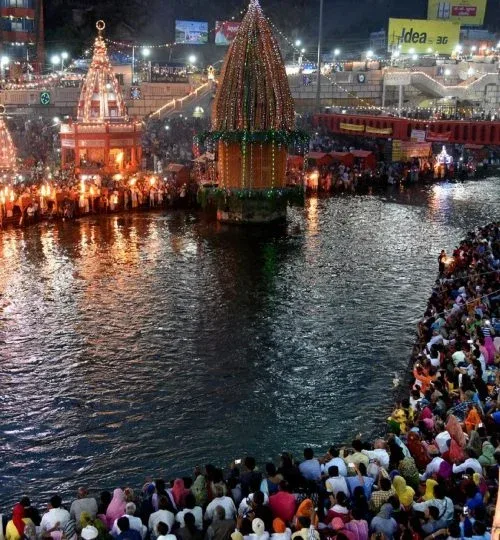

King Vikramaditya built the sacred bathing ghats at Har Ki Pauri in honor of his brother, Bhatrihari, who had come to meditate in Haridwar. It is believed that Lord Vishnu once visited Brahmkund at Har Ki Pauri, and a large footprint on a stone wall at the site is said to belong to him. Every day, a multitude of devotees take a holy dip in the Ganges, and the evening Ganga Aarti, which is attended by hundreds, is a significant event at the ghats.
Chandi Devi Temple




Mansa Devi Temple




Mansa Devi Temple is a key part of the Siddhpeeth trio in Haridwar, alongside Chandi Devi and Maya Devi. Located on Bilwa Parvat, it is a Hindu temple dedicated to Goddess Mansa Devi. The inner shrine of the temple houses two idols that devotees worship. The temple is situated atop the Sivalik Hills, offering a panoramic view, and can be reached via a 3 km pedestrian path from Haridwar. Known also as Bilwa Tirth, Mansa Devi Temple is one of the Panch Tirth (Five Pilgrimages) in Haridwar.
Shantikunj Gayatri Parivar




Shantikunj has become a central hub for spiritual and moral regeneration, attracting millions of followers and visiting dignitaries like the Dalai Lama and Murari Bapu. The Gayatri Pariwar, based at Shantikunj, is dedicated to fostering national integration and promoting cultural, ethical, moral, and spiritual values. The complex offers spiritual teachings, training, and education aimed at personal enlightenment. Additionally, Shantikunj houses the Brahmavarchas Shodh Sansthan, a research institute, and Dev Sanskriti Vishwavidyalaya, a residential university. It also provides free Ayurvedic treatment to those in need.
Daksh Mahadev Temple



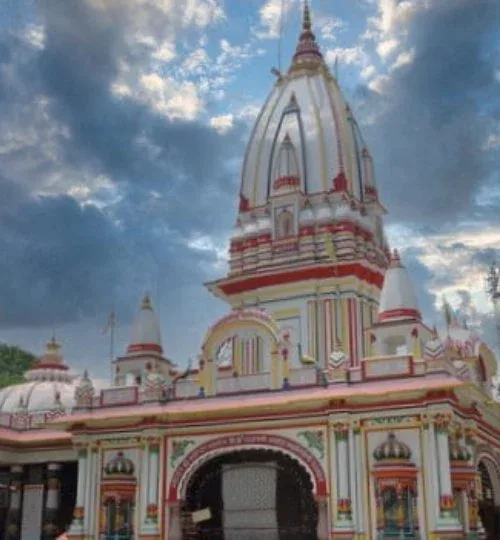
According to mythology, King Daksha Prajapati, the son of Brahma, had a daughter named Sati who married Lord Shiva. During a grand Yagya organized by King Daksha, he invited all gods, sages, and saints except Shiva, leading to an insult. In response to her husband’s dishonor, Sati immolated herself in the Yagya’s fire. To avenge this, Virbhadra, a fierce warrior created by Shiva, went to Kankhal and decapitated King Daksha. After pleas from the other gods, Lord Shiva restored Daksha to life, replacing his head with that of a male goat. King Daksha then acknowledged his errors and repented before Lord Shiva.
Ready to Explore?
Start your adventure with us today. Secure your spot and let Uttarakhand Travells craft your perfect journey
